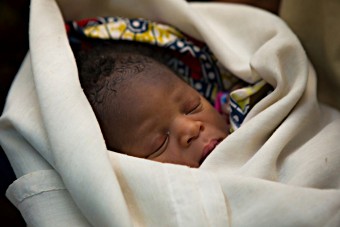
New York, 27 September 2018 - Today, women are nearly half as likely to die during childbirth or from pregnancy-related complications than their mothers. Much of this progress is attributable to the fact that more women give birth in hospitals and health facilities with skilled birth attendants present. But besides a huge reduction in maternal mortality, increased rates of institutional births now also present an opportunity to prevent a major non-communicable disease: liver cancer.
The hepatitis B virus is the leading cause of liver cancer and is more than 50 times more infectious than HIV. Worldwide, 257 million people are chronically infected with hepatitis B, which means the infection could eventually lead to liver cancer. Of these, around a quarter will die from hepatitis B-related liver cancer or cirrhosis.
Vaccine preventable
Yet the majority of these cases could be avoided through vaccination. Gavi, the Vaccine Alliance, helps protect roughly half the world’s children against hepatitis B through support of the pentavalent vaccine. Since hepatitis B vaccines were first developed in the 1980s, hepatitis B infection rate has fallen dramatically worldwide and there has been a noticeable drop in liver cancer cases.
But even achieving full coverage with this vaccine would not fully solve the problem, because it misses out the cohort most at risk of chronic hepatitis B infection: newborns, who can contract the virus from their mother during or shortly after birth, increasing their chances of developing liver cancer later in life. Although people can become infected with hepatitis B at any point in their lives, the risk of chronic infection – which can eventually lead to liver cancer – drops off rapidly with age. The risk for newborns is as high as 90%, but for five-year-olds it drops to 5-10%.
Game-changer
This is where the increase in the number of facility births could be a game-changer. If we can reach children with a hepatitis B vaccine within 24 hours of birth, they can be protected against the virus even if they have already been exposed. Facility births provide an invaluable platform for doing this, because the contact between the baby and the health service already exists.
We saw the effect of this approach when we carried out the ‘China Gavi Project’ between 2002 and 2009, targeting children in less developed areas of China with hepatitis B vaccine at birth. Before the project, 40% of hepatitis B cases in these regions were caused by transmission from mother to baby. Incentives were put in place to increase the number of women who gave birth in hospitals, such as subsidies to mothers. As the facility birth rate increased from 78% to 96%, the coverage with hepatitis B birth dose also rose, from 60% to 91%. During that time, the project helped to prevent approximately 3.8 million chronic hepatitis B infections and 680,000 deaths.
A similar strategy is now being explored in Cambodia, where hepatitis B vaccination was introduced into the routine immunisation schedule in 2005, including a birth dose. Earlier this year, they announced that they had reduced the hepatitis B infection rate in children to less than 1%.
Unique challenges
There are still barriers to delivering the hepatitis B vaccine at birth. Mothers must be informed about the importance of the vaccine, the maternity ward must be equipped with uninterrupted vaccine supply and adequate cold chain equipment to store it, and maternal, neonatal and child health programmes must work together with immunisation programme to establish how hepatitis B vaccination can fit into the services that they already provide. Reaching children born at home within 24 hours also presents its own unique challenges.
However, if we can overcome these challenges, achieving high coverage with the vaccine is feasible. Taking an integrated approach to vaccine programmes as part of the wider health system is necessary for a comprehensive cancer strategy, and strengthening health systems. This is something we also see in our work to protect against HPV-infection-linked cervical cancer in adolescent girls. The HPV vaccine must be administered to girls when they are in their early teens – an age group that often does not have any contact with the health system. By creating a point of contact between teenage girls and the health service, the HPV vaccine provides an opportunity to reach girls with other services that could prove crucial at this significant stage in their lives. It provides an opportunity to talk to girls about nutrition, menstrual hygiene, sexual and reproductive health and help them to become change-makers within their community.
Today at the United Nations General Assembly, global leaders in public health will gather to discuss the prevention and control of non-communicable diseases (NCDs). Along with screening and treatment, vaccines that protect against infection-linked cancers will have a major role to play in this response. The hepatitis B vaccine, as one of the safest, most effective and lowest cost vaccines available, is considered one of the “best buys” in NCD prevention. By capitalising on the increase in facility births to reach more babies with the vaccine, we can protect both newborn boys and girls against one of the most important known carcinogens before they are even a day old.
